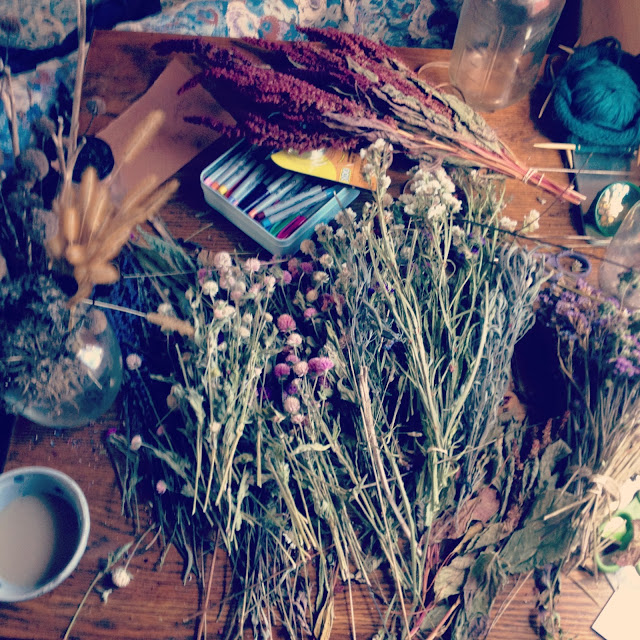However, Sandy did arrive at a fairly opportune point in farmlife: All the harvests are done, plants are pulled out of the ground, and most of our growing spaces are covered in a thick, wind-blown layer of rye or oat cover crop. The garlic is in the ground, and the chickens are in the barn, which is battened and closed as tight as its ancient frame will allow.
So last night, as the wind shook the spaceship (our affectionate name for the apprentice living room) and the pellet stove pumped a warm glow, I got to work on the last steps of a season-long process.
The above is my favorite picture in Flower Scout's short history; it seems to show the semi-blurry fervor of a messy new project. What you can't see are the pieces of leaf and petals all over the floor, or the pile of yarn next to the table, or the apple cores, or half-cup of whiskey, or the many blankets.
These little half-wreaths will come along with me, back to Troy, where I'm planning to keep making them (and many more things, besides). If you're interested in having a wreath made for you or someone you love who loves hand-made things, drop me a note at flowerscoutfarm.gmail.com.
























































